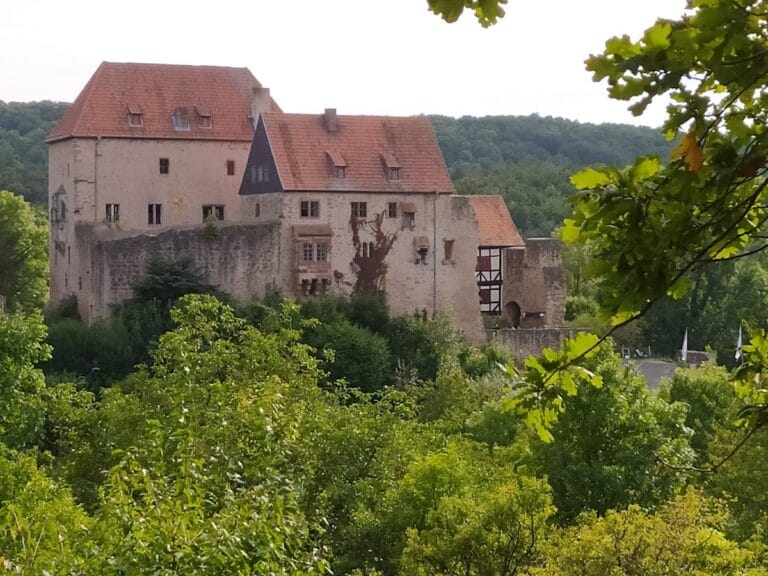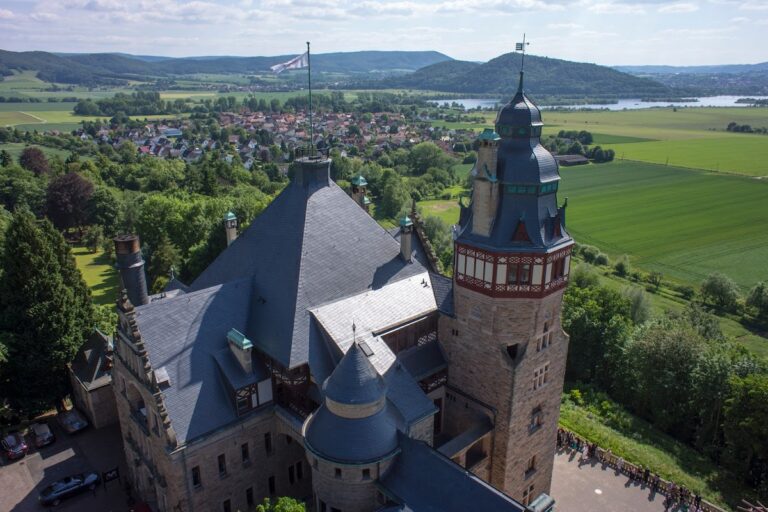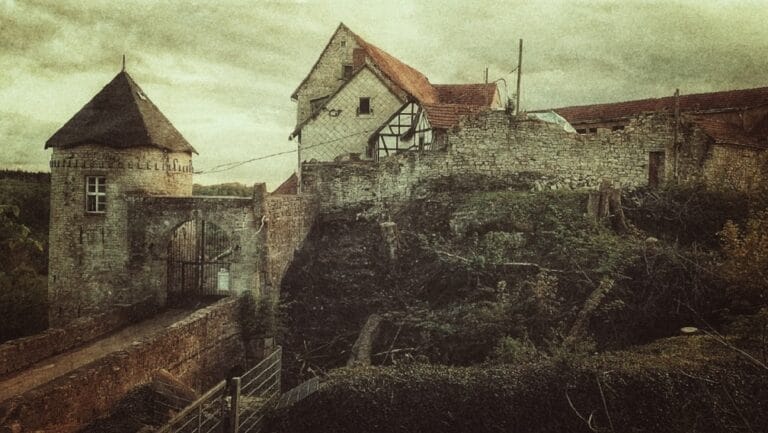Wartburg Castle: A Historic Fortress and Cultural Landmark in Germany
Visitor Information
Google Rating: 4.7
Popularity: Very High
Google Maps: View on Google Maps
Official Website: www.wartburg.de
Country: Germany
Civilization: Medieval European
Remains: Military
History
The Wartburg castle stands near Eisenach in Thuringia, Germany. It was founded around 1067 by Ludwig der Springer, a member of the Ludowing dynasty. The castle’s name likely comes from the German word “Warte,” meaning watch or guard, reflecting its original role as a lookout fortress overseeing the surrounding landscape.
The first known mention of the Wartburg appears in 1080 in Bruno’s treatise on the Saxon War, confirming its early medieval importance. Under Landgrave Ludwig II, who ruled from 1140 to 1172, the castle saw significant development, including the construction of the Palas, a residential hall built between 1156 and 1162. This building is the earliest of its kind in the German-speaking world, marking the Wartburg as a pioneering princely residence.
During the late 12th and early 13th centuries, the Wartburg became a cultural center under Landgrave Hermann I (1190–1216). He supported a court of Minnesänger, medieval German lyric poets, and fostered the legendary Sängerkrieg, a contest of singers that became part of German folklore. Around this time, Elisabeth of Thuringia lived at the castle from 1211 to 1227 before her canonization as a saint.
In the early 16th century, the Wartburg gained renewed historical significance when Martin Luther was hidden there from May 1521 to March 1522. Disguised as “Junker Jörg,” Luther translated the New Testament into German in just eleven weeks, an event that profoundly influenced the Reformation.
After the Ludowing dynasty ended in 1247, the castle passed to the Wettin family. They expanded and repaired the Wartburg, especially after a fire in 1318. By the 15th century, the castle’s role shifted to a secondary residence, with simpler timber-framed buildings added.
Despite several sieges, the Wartburg was never conquered. In the 19th century, it became a national monument and a site for political gatherings, including the Wartburgfest student protests in 1817 and 1848. Between 1838 and 1890, Grand Duke Carl Alexander of Saxe-Weimar-Eisenach sponsored a historicist restoration led by architect Hugo von Ritgen, shaping much of the castle’s current appearance.
During the Nazi era, the Wartburg was used for propaganda. In 1938, the original cross on the tower was temporarily replaced by a swastika but restored after public outcry. The castle suffered damage from American artillery in April 1945 but was mostly repaired by 1946. Its valuable armory collection was confiscated and taken to the Soviet Union, where it subsequently disappeared.
Since German reunification in 1990, archaeological research and restoration have progressed. In 1999, the Wartburg was designated a UNESCO World Heritage Site, recognized for its exceptional medieval architecture and cultural importance. The castle continues to serve as a place for exhibitions, concerts, and commemorations, including events marking the 500th anniversary of the Reformation in 2017.
Remains
The Wartburg castle is situated on a steep rocky ridge about 220 meters above Eisenach, at roughly 411 meters above sea level. Originally, it consisted of four main sections, but today only the outer bailey (Vorburg) and the main castle (Hauptburg) remain.
The outer bailey is entered via a drawbridge and gatehouse, built during the castle’s conversion into a residence. Nearby are late medieval buildings such as the Ritterhaus and Vogtei. The ring wall partly dates to the 12th century but was altered in the 15th century with timber-framed overhangs known as the Margaretengang on the west and Elisabethgang on the east.
The main castle is surrounded by 19th-century structures including the Neue Kemenate, Torhalle, and Dirnitz, added during the historicist restoration. Medieval buildings had largely decayed by Goethe’s era and were reconstructed based on archaeological evidence.
At the heart of the Wartburg stands the late Romanesque Palas, built around 1156 to 1162. It is the oldest surviving princely residential building of its type in Germany. Dendrochronology confirms timber from 1157/1158 was used. The Palas shows architectural influences from Roman palace designs.
Inside the Palas are several notable rooms: the Rittersaal (Knight’s Hall), a square chamber with a fireplace of uncertain original use; the Speisezimmer (dining room); and the Elisabeth-Kemenate, a heated chamber redecorated between 1902 and 1906 with neobyzantine glass mosaics by August Oetken depicting scenes from Saint Elisabeth’s life.
The second floor houses the Wartburg chapel and the Sängersaal (Singers’ Hall), decorated with 19th-century frescoes by Moritz von Schwind illustrating the legendary Sängerkrieg. The Elisabethgalerie, also painted by Schwind, was restored between 2015 and 2017.
The third floor contains a 40-meter-long Festsaal (festival hall), added after the castle became a Ludowing residence. The Südturm (South Tower), dating from the 13th century and rebuilt after the 1318 fire, is the only original medieval tower still standing in the main castle. It guarded the southern slope toward Eisenach.
The castle grounds include a garden area (Burggarten) located about three meters below the Gadem building, which served as a magazine, armory, and kitchen. The Gadem was rebuilt between 1874 and 1877, preserving its vaulted cellar.
The Bergfried, or main tower, was reconstructed between 1853 and 1859 on foundations slightly north of the original medieval tower, which had fallen into ruin by the 16th century. The 19th-century restoration used local red Rotliegend sandstone and Seeberg sandstone from near Gotha.
The Vogtei building in the outer bailey contains the Lutherstube, where Martin Luther stayed and translated the New Testament. It also features a Gothic oriel window called the Nürnberger Erker, transplanted from a patrician house in Nuremberg in the 1870s, and the Pirckheimer Stübchen, a cabinet room dating to around 1490, relocated from Nuremberg in 1867.
Between 1912 and 1914, the Wartburg-Gasthof guesthouse was built following designs by architect Bodo Ebhardt. The castle also hosts a renowned concert hall, whose acoustics were influenced by composer Franz Liszt during the Palas’s conversion to a music venue.
The Wartburg is surrounded by a roughly 27-hectare forested area protected by building restrictions known as the “Blue Line,” established in the 1930s to preserve the castle’s landscape. Modern infrastructure improvements include updated water and sewage systems, access roads, and visitor facilities, supported by federal cultural funding.










